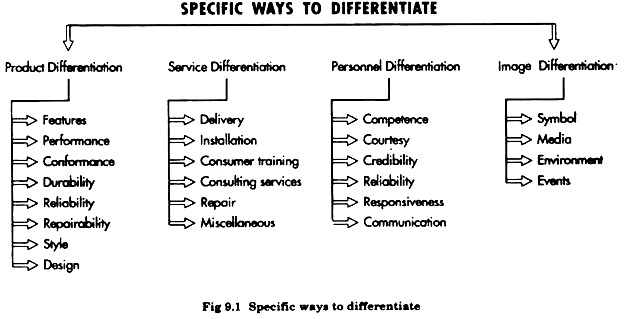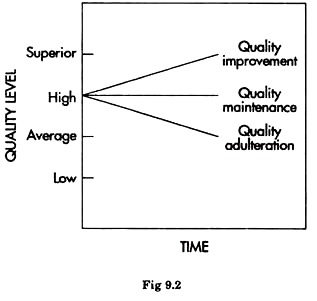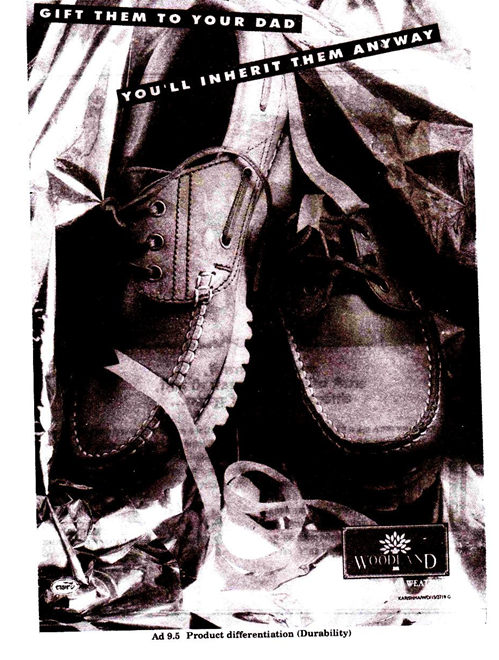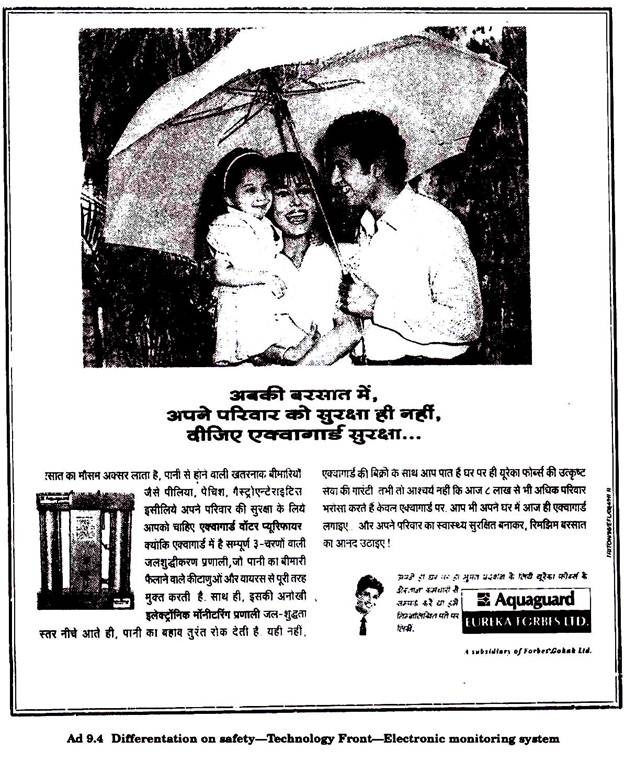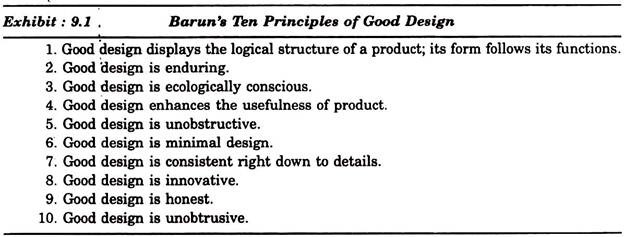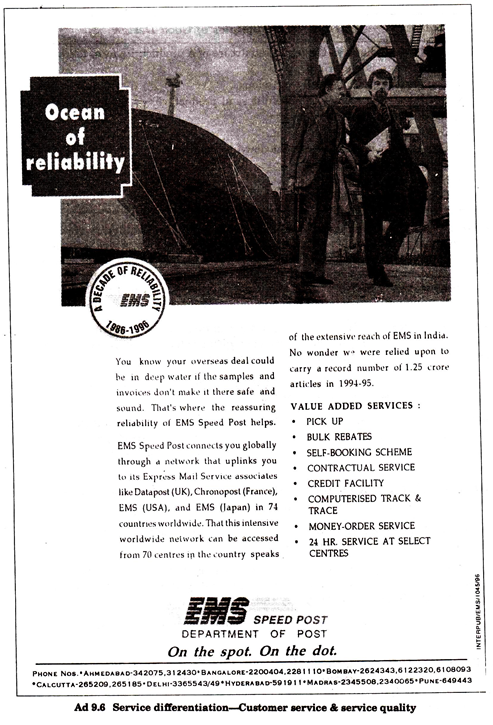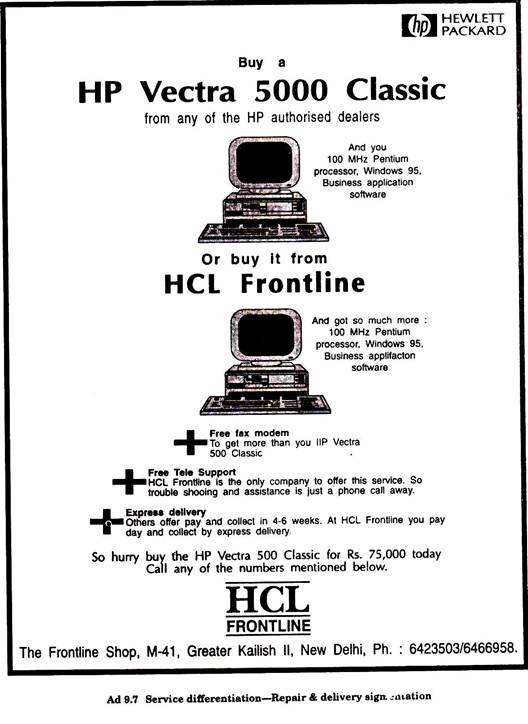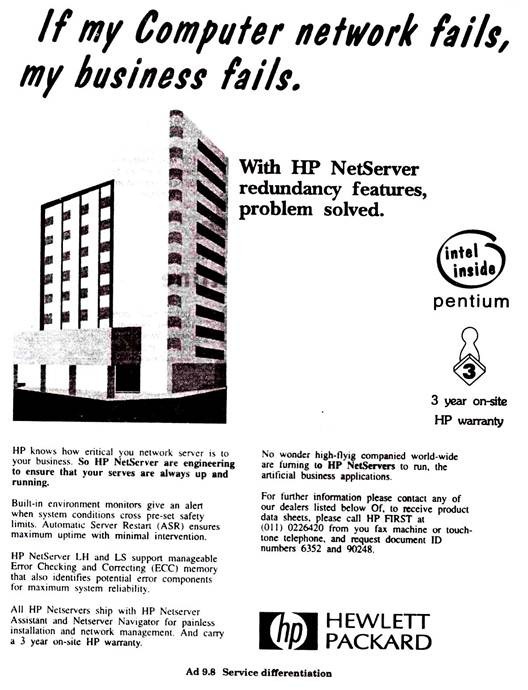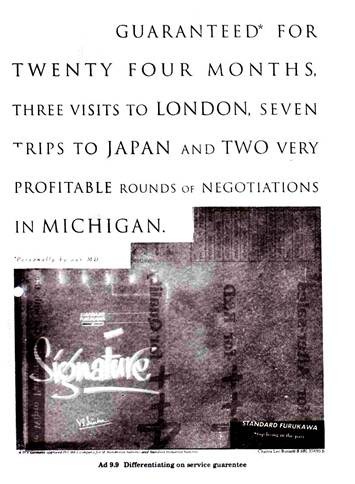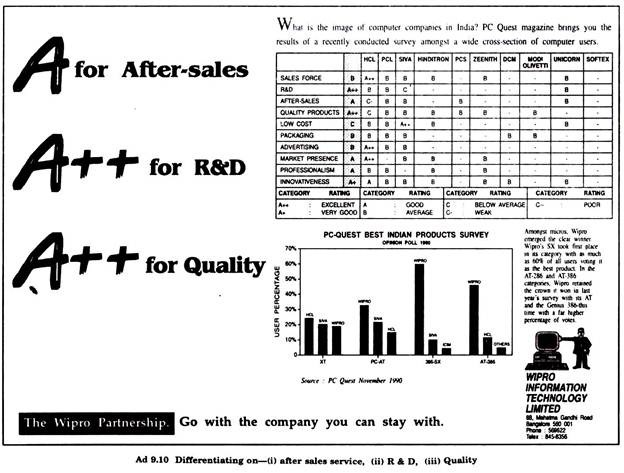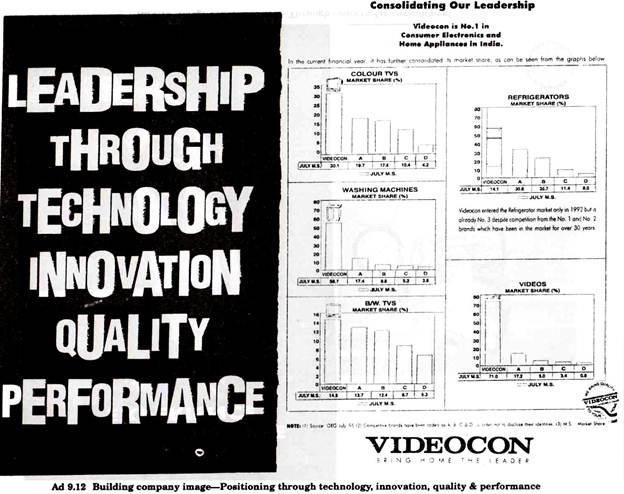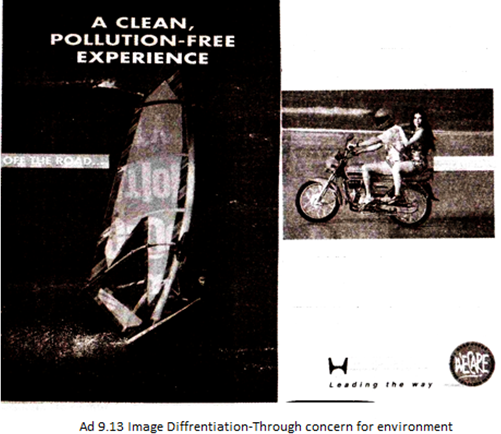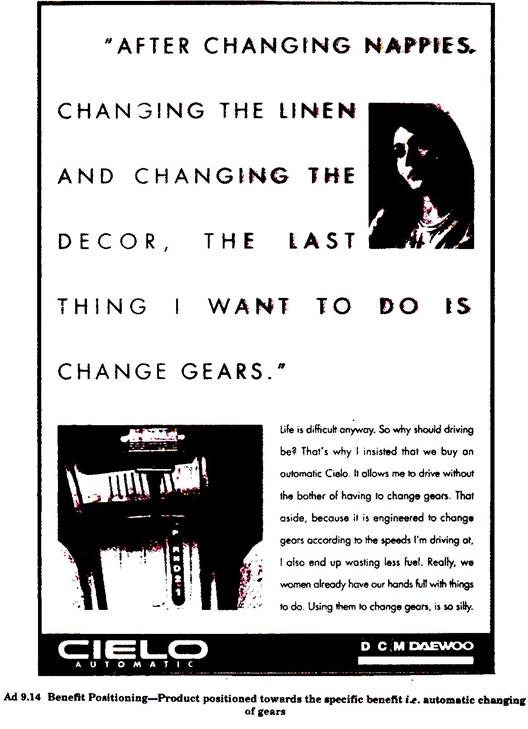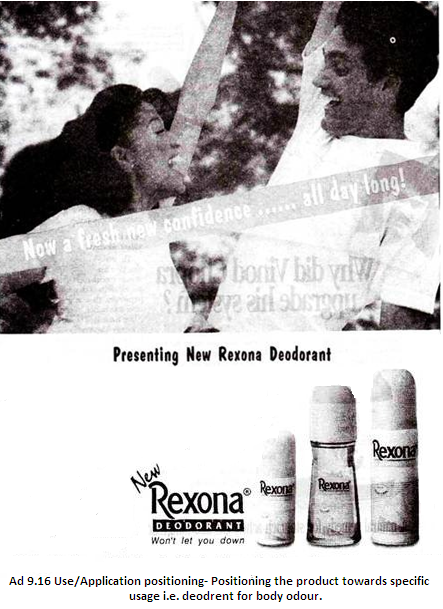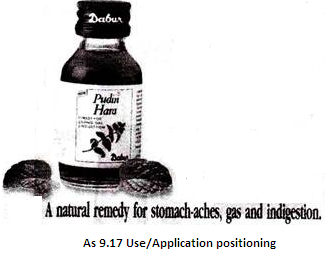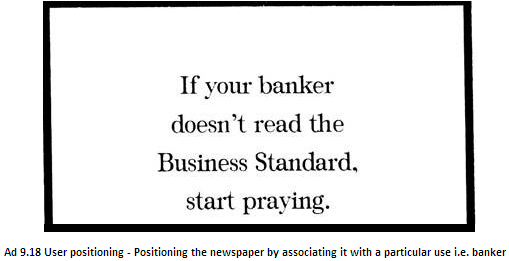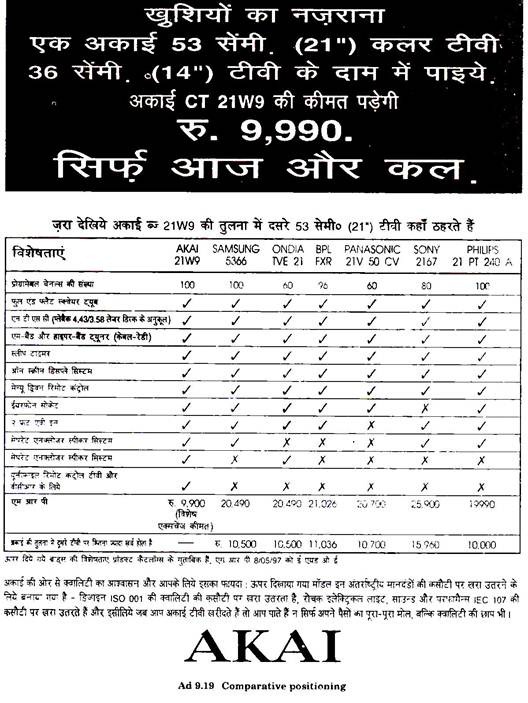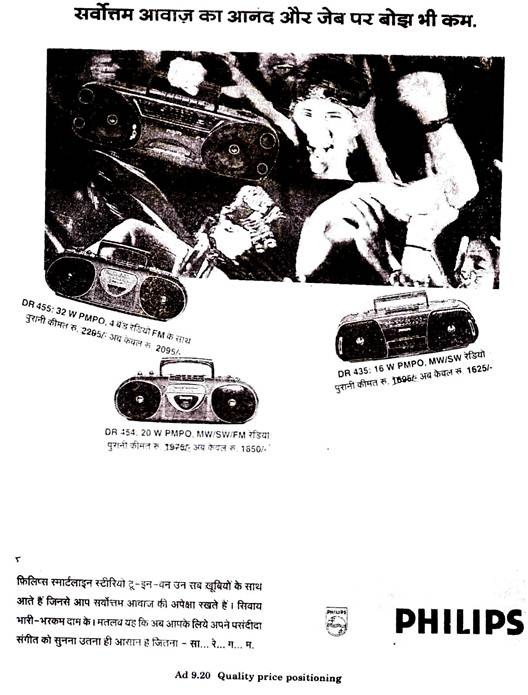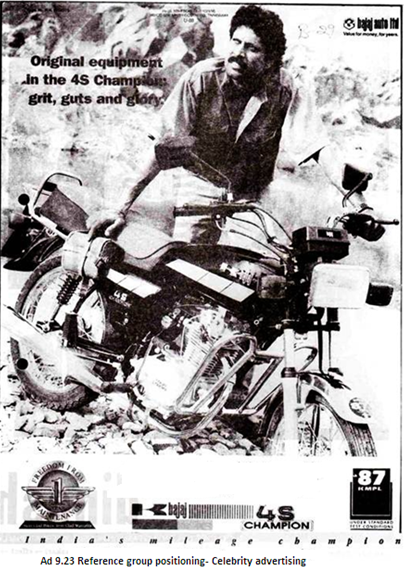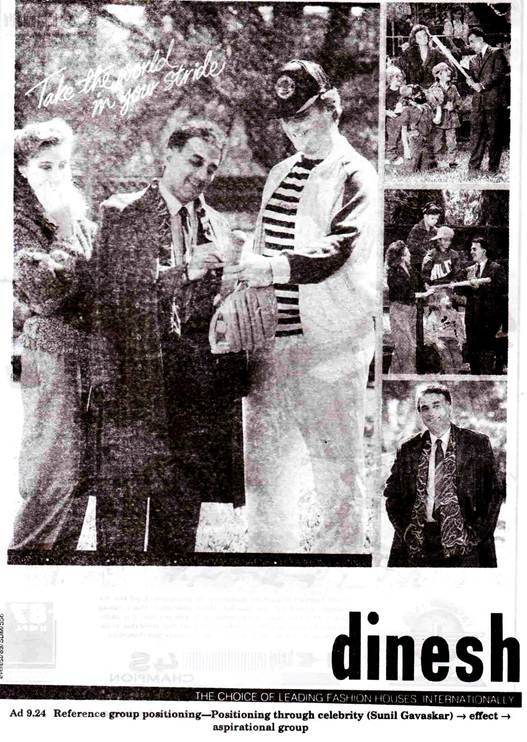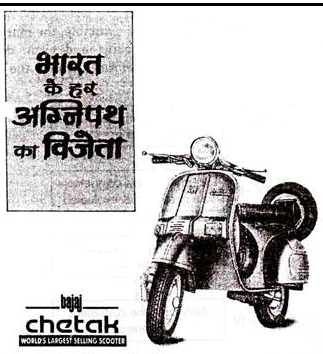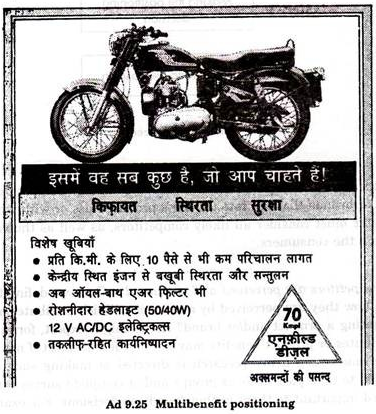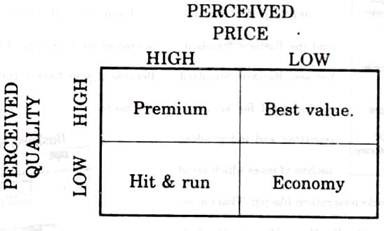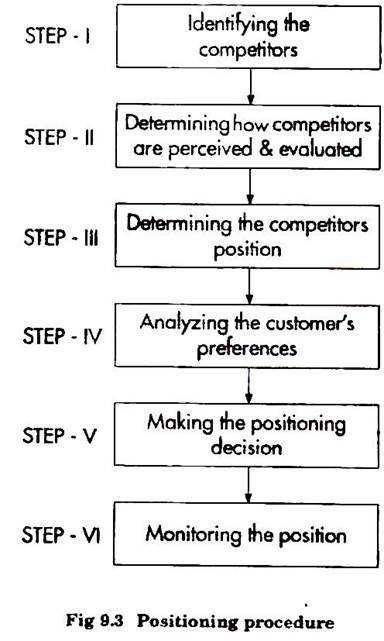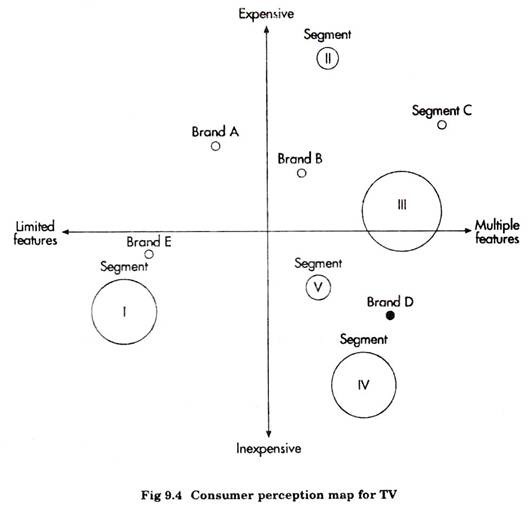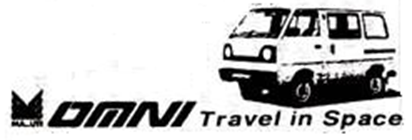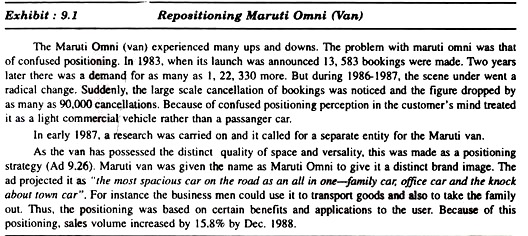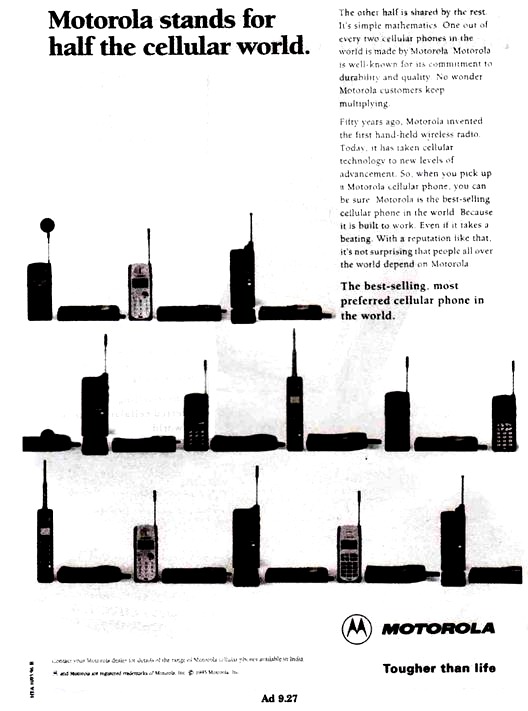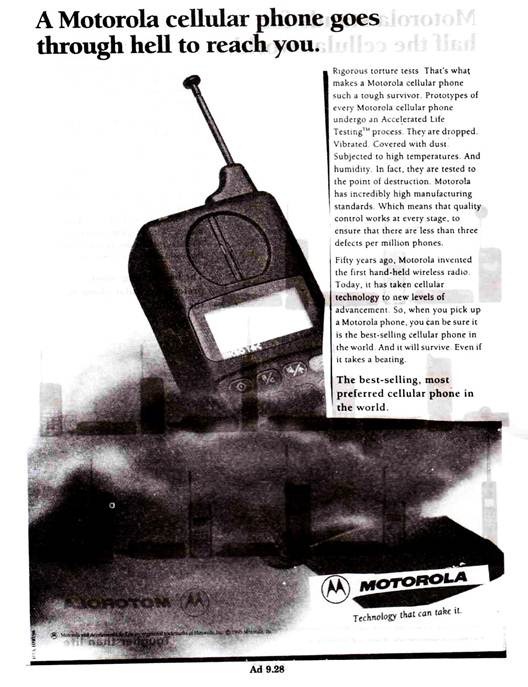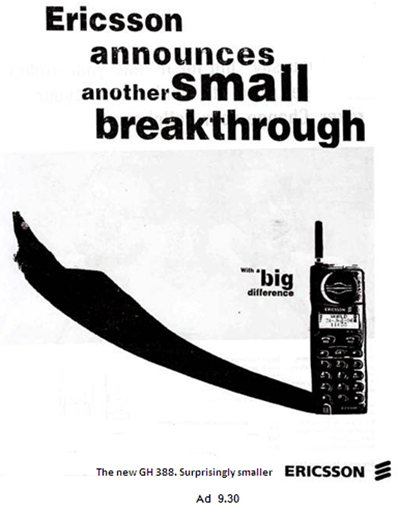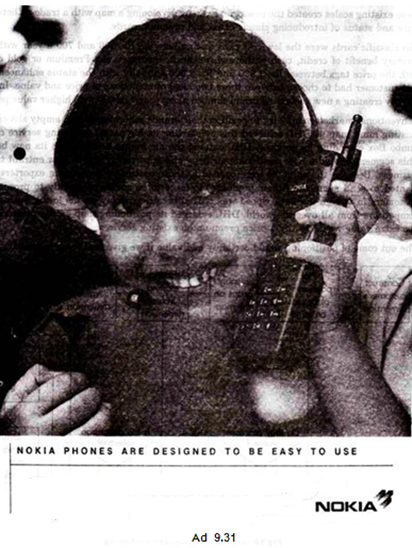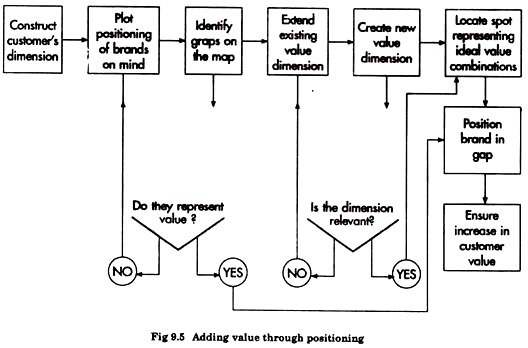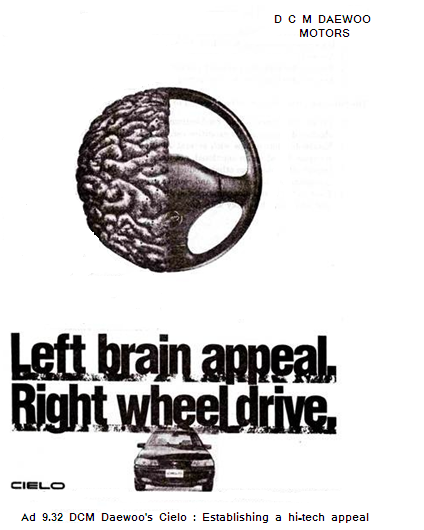A project report on product positioning in India. This report will also help you to learn about:- 1. Introduction to Product Positioning 2. Objectives and Usefulness of Product Positioning 3. Elements of Product Positioning 4. Approaches to Product Positioning 5. Differentiating the Product 6. Specific Ways to Differentiate 7. Product Positioning Strategy and Other Details.
Contents:
-
Project Report on the Introduction to Product Positioning
-
Project Report on the Objectives and Usefulness of Product Positioning
-
Project Report on the Elements of Product Positioning
-
Project Report on the Approaches to Product Positioning
-
Project Report on the Differentiating the Product
-
Project Report on the Specific Ways to Differentiate
-
Project Report on Product Positioning Strategy
-
Project Report on Dr. Jagdish Sheth Competitive Positioning Model
-
Project Report on Positioning Procedure
-
Project Report on Communicating the Company’s Positioning
-
Project Report on Repositioning
-
Project Report on Positioning by Packaging
-
Project Report on Successful Positioning Experiences
-
Project Report on Positioning of Cellular Phones
-
Project Report on Adding the Value through Positioning
Project Report # Introduction to Product Positioning:
Product positioning is the final step in market targeting. As the segmentation identifies the customer to be targeted, positioning strategy is concerned with selecting a marketing mix appropriate to each target market segment.
Thus, positioning of a firm’s brand is ultimately determined by the buyer in combination with the actions of competitors. Positioning of brand is how it is perceived by the buyer relative to the brand’s of the firm’s key competitor.
It refers to certain mental perception of the offering. For example, one brand of tooth paste may be considered better for its taste. Generally speaking, it is the way consumers perceive various brands that determines their respective positions.
By physical constitution, two brands of a product may be identical, yet they could be perceived differently. Conversely, two brands may be dissimilar in terms of their physical characteristics yet they could be perceived as similar if their differentiating characteristics are considered unimportant.
Positioning is the process of distinguishing a brand from its competitors so that it becomes the preferred brand in defined segments of the market. Ries and Trout, who developed the concept of positioning, defined it as follows:
Positioning starts with a product. A piece of merchandise, a service, a company, an institution, or a even a person… but positioning is not what you do to a product. Positioning is what you do to the mind of the prospect. That is, position of the product in the mind of the prospect.
“Positioning is the act of designing the company’s offer and image so that it occupies a distinct and valued place in the target customers’ mind.” Philip Kotler
Project Report # Objectives and Usefulness of Product Positioning:
The objective of positioning strategy is to have the brand favourably perceived by the people in .the target market. Two firms have the same positioning strategy if their marketing offerings are perceived to be identical.
Typically there are differences in how buyers perceive marketing offering. Often the product is the focal point of the positioning strategy since the other marketing mix components are working towards positioning the products in the eyes and the mind of the buyer.
As competition intensifies and brands proliferate, consumers tend to differentiate between brands in their own way. Positioning is a conscious attempt on the part of the marketer to accentuate this natural tendency and in the process, impart a distinct identity to his own brand to make it stand out among the competitors.
The basis on which this differentiation is achieved reflects consumer preferences or attitudes. The marketer, through his diverse and co-ordinated actions, tries to influence this process.
The concept of positioning is also important in various other aspects of the marketing strategy. Once one is clear about the position one wants, the other marketing decisions like product design, packaging, pricing, method of distribution, etc. … become clearer.
“Positioning is the art of selecting out of a number of unique selling prepositions, the one that will get you maximum sales”. ROSSER REEVES
“The most important decision you will ever make about your product is, ‘How should I position my product.” DAVID OGILVY
Product positioning is so central and critical that it should be considered at the level of a mission statement … it comes to represent the essence of a business. DAVID AAKER
Key aspect of brand position is the way it is perceived in relation to the competitive brands, among which we include similar products in product line of the same company; for example surf, sunlight and wheel washing powders, all marketed by Hindustan Lever.
Product positioning concept can be comprehended in the following three points:
1. The position of a brand is the perception it brings about in the mind of a target consumer.
2. This perception reflects the essence of the brand in terms of its functional and non-functional benefits in the judgment of that consumer.
3. It is relative to the perception, held by that consumer, of competing brands, all of which can be represented as points or positions in his or her perceptual space and together, make up a product class.
Project Report # Elements of Product Positioning:
There are four variables that affect the position of a given product:
(a) The product
(b) The company
(c) The competition
(d) The consumer
(a) The Product:
The product is one of the center point of positioning strategy. All the product features are to be communicated well to differentiate the product. Packaging may be used to lend an aura of desirability to the product but its cost must finally be justified by its intensity of meaning to the customer.
(b) The Company:
A product comes from a company and every company has its own history. Generally, the stronger the image & profile of the company, the better the image of its products. For instance, consumers may perceive a better image of a product if it comes from a reputed home as Tata, Reliance, etc.
(c) The Competition:
Products positioning is done in relation to various competitive offerings. In most of the cases, consumers have a tendency to judge a product in comparison of the dominant brand. HCL promoted its photocopier through competitive advertising. Akai used competitive advertising by comparing the features of its TV with that of others. Proper positioning also enables a company to side step competitors.
(d) The Consumer:
Positioning is essentially based on consumer perceptions rather than factual evaluations. Hence it becomes necessary to examine how the consumers view the product. Here the. consumer’s self perception comes into play along with his ‘cognitive and connotative factors.
If he sees himself as modern and-progressive, he will expect a more progressive product. If, on the contrary, he see himself a traditional, he will be possessing a taste for performance.
Project Report # Approaches to Product Positioning:
Positioning strategies generally assume one of two approaches—one focusing on the consumer, the other on the competitors. While both approaches involve the association of product benefits with consumer needs, the former does so by linking the product with the benefits the consumer will derive or creating a favourable brand image.
The latter approach positions the product by comparing it and the benefits if offers as against the competitors.
Many advertising practitioners consider market positioning the most important factor in establishing a brand in the market place. Thus, positioning, as used in this text, relates to the image of the product and or brand relative to competitive products or brands. The position of the product or brand is the key factor in communicating the benefits it offers and differentiating it from the competitors.
Project Report # Differentiating the Product:
Differentiation is the act of designing a set of meaningful differences- to distinguish the company’s offer from competitor’s offer. The very important aspect of product positioning is differentiating the product (brand).
There can be four broad ways to differentiate the company’s offer:
(a) Better offering
(b) Newer offering
(c) Faster offering
(d) Cheaper offering.
(a) Better Offering:
It means that the company’s offer out performs its rivals. It usually involves improving an existing product in a minor way.
(b) Newer Offering:
It means developing a solution that didn’t exist before. This usually involves higher risk than a simple improvement but also the chance of a higher gain.
(c) Faster Offering:
Faster offering means reducing the performance or delivery time involved in using or buying a product or service.
(d) Cheaper Offering:
That means getting a similar product for less money.
Treacy and Wiersema distinguished three strategies that lead to successful differentiation and market leadership.
1. Customer Intimacy:
Knowing customers intimately and being able to respond quickly to their specific and special needs.
2. Product Leadership:
Offering customers innovative products and services that enhance the customer’s utility and out perform competitor’s products.
3. Operational Excellence:
Providing customers with reliable products or services at competitive prices and easy availability.
Project Report # Specific Ways to Differentiate:
A company or market offer (Fig. 9.1) can be differentiated along with the four basic dimensions:
(a) Product Differentiation
(b) Service Differentiation
(c) Personnel Differentiation
(d) Image Differentiation.
(a) Product Differentiation:
Product can be- differentiated on the basis of features, performance, conformance, durability, reliability, repair ability, style and design.
Features:
Are the characteristics that supplement the product’s basic functioning. Most products can be offered with-Varying features. Features are a competitive tool for differentiating the company’s product.
Performance Quality:
Performance quality, refers to the levels at which the product’s primary characteristics operate. Buyers of expensive products normally compare the performance characteristics of different brands. Most products are established initially at one of the four performance levels as low, average, high and superior. A company must also decide how to manage performance quality through time.
There are three strategies to manage performance quality (Fig. 9.2):
(i) Quality improvement
(ii) Quality maintenance
(iii) Quality adulteration.
Quality improvement is where the manufacturer continuously improve the product and often produces the highest return and market share. Quality maintenance strategy calls for maintaining their existing product quality.
Quality adulteration calls for reducing product quality through time to offset rising cost with the hope that the buyers will not notice any difference. Some companies may reduce the quality deliberately in order to increase their current profits although this often hurts their long run profitability.
Conformance quality is the degree to which a product’s design and operating characteristics come close to the target standard. It says that in practical sense how performance quality conform and work. The positioning of product on conformance quality ground can best be done by using a endorser (expert of the field) to promote the product (Ad. 9.2).
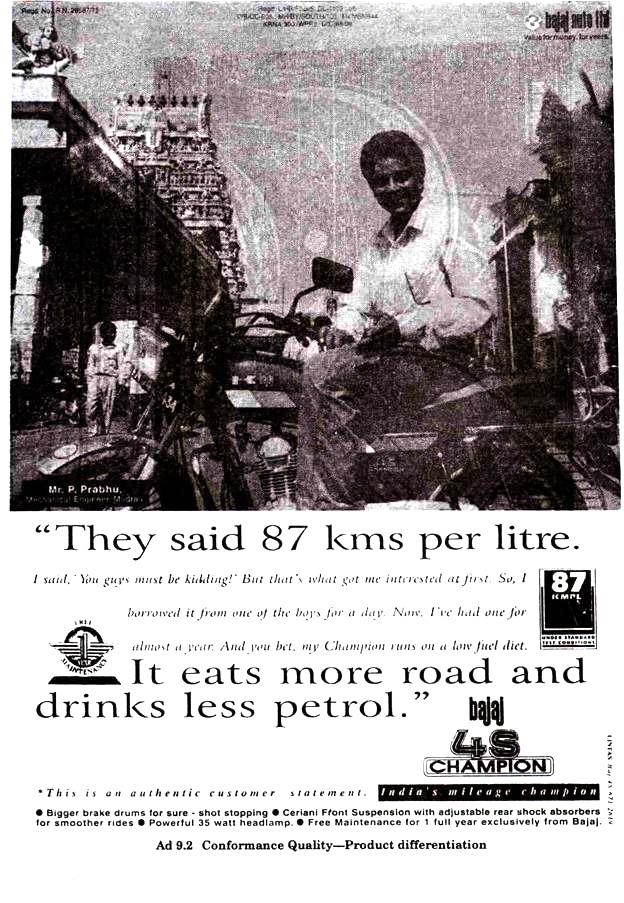 Durability is measure of the product’s expected operating life (Ad. 9.5).
Durability is measure of the product’s expected operating life (Ad. 9.5).
Reliability is the measure of the probability that the product will not malfunction or fail within a specific time period.
Reparability is the measure of ease of fixing a product that malfunctions or fail.
Style describes how well the product looks and feels to the buyers.
Design:
Features, performance, conformance, durability, reliability, reparability and style are all components of a design. From the company’s point of view, a well design product would be easy to manufacture and distribute.
From the customer’s point of view, a well designed product would be pleasant to look at and also easy to open, install, learn how to use, repair and dispose of a good design attract attention, improve quality and performance, lower costs and more strongly communicate value to the intended target market (Ad. 9.3).
(b) Service Differentiation:
Service differentiation means differentiating the product on the basis of accompanying services associated with product which includes delivery, installation, customer training, consulting service, repair etc. (Ad. 9.6).
Delivery refers to how well, which includes, speed, accuracy and care attending, the product or service is delivered to the customer (Ad. 9.7).
Installation:
The marketers may differ in the quality of their installation. The buyers of heavy equipment (industrial product, institutional product) expect good installation service from the marketer. Installation refers to the work done to make a product operational in its planned location.
Customer training refers to training the customer to use the marketer’s equipment properly and efficiently. As in the case of computers it is very important. Consulting Service refers to the advising service that the market has to offer free of cost at the time of installation of product.
Repair refers to the quality of repair service available to the buyers of the company’s product. Automobile buyer? are quite concerned with the quality of repair service that they can expect from any dealer from whom they buy (Ad. 9.7).
Miscellaneous service differentiation includes warranty, maintenance contract etc. (Ad. 9.8, 9.9).
(c) Personnel Differentiation:
Human resource is the most important resource in any organisation and gives competitive advantage to the firm. As Singapore Airlines promote their service (airlines) on the beauty and grace of their flight attendants.
The employees should have following characteristics to gain the competitive advantage:
(i) Employees should possess required skill and knowledge (competence).
(ii) Employees should be friendly, respectful and considerate (courtesy). :
(iii) Employees should make an effort to understand the customer and communicate clearly.
(iv) Employees should respond quickly to customer’s requests and problems,
(vi) Employees perform the service with consistency and accuracy.
(d) Image Differentiation:
Image means the perception of the product service in the minds of the customers. Image differentiation can be done on the basis of USP, brand personality (as Pataudi for Gwalior, Sachin for VISA card), symbols (Ganda brand Phenyl), color (Maggie products) or events (as pepsi and coca cola has the image of associating with cricket, ITC (Gold Flake) with Billiards etc.) etc. (Ad. 9.12, 9.13)
Project Report # Product Positioning Strategy:
A common approach to positioning is setting the brand a part from competitors based on specific characteristics or benefits offered. Sometimes a product may be positioned on more than one product benefit.
In searching for a positioning strategy, the following positioning strategies are available to the marketer to position its product:
(a) Benefit positioning
(b) Attribute positioning
(c) Use/application positioning
(d) User positioning
(e) Competitive positioning
(f) Product category (class) positioning
(g) Quality/Price positioning
(h) User’s life style positioning
(i) Positioning by reference groups.
(a) Benefit Positioning:
Here the marketer position its product\ service towards the specific benefit (s) that the user will get after using the product (Ad. 9.14).
(b) Attribute Positioning:
The positioning is done through listing the various attributes which the product/service possess.
(c) Use/Application Positioning:
It is another way to communicate a specific image or position for a brand. It positions the brand towards the specific usage. Dettol soap or Maggi Noodles are the instances of such positioning. While this strategy is often used to enter a market- based on a particular use or application, it is also an effective way to expand the usage of the product (Ad. 9.15, 9.16, 9.17).
(d) User Positioning:
Positioning a’ product by associating it with a particular user or group of users is yet another approach utilized by marketers. Photocopier manufacturers have started directing their machines to special groups of users such as engineers and architects (Ad. 9.18).
(e) Comparative Positioning:
Competitors may be as important to the positioning strategy as a firm’s own product or services. As AKAI has positioned its televisions by comparing its various features with those of competitors (Ad. 9.19).
(f) Product Category (Class) Positioning:
This category calls for associating the product to the distinct product class. This is effective especially when introducing a new product. The short lived success of milk food yoghurt was mainly due to this strategy with the ad headline “it is not curd, it is milk food yoghurt”. Similarly Maruti Omni repositioned it as a family car from a commercial car.
(g) Quality/Price Positioning:
Marketers often use quality/price characteristics to position their brands. One way using this positioning approach is to use ads that reflect the image of the high quality as well as the lower reasonable price. For example Nirma positioned its different brands of detergents and soaps by this positioning (Ad 9.20).
(h) User’s life Style Positioning:
In consumer marketing specially in the case of items of conspicuous consumption, the positioning by life style is very common. As charms had positioned its cigarettes as “the spirit of freedom”. Pepsi cola as “the freedom to be”.
(i) Positioning by Reference Groups:
The importance of reference groups even in purchase decisions has been accepted as a tool for positioning products. The Indian market has seen extensive use of sport personalities and film stars in the advertisements of many products of personal use (Ad 9.22, 9.23, 9.24).
Sometime many marketers use multiple positioning strategies at the same time (Ad 9. 25).
Project Report # Dr. Jagdish Sheth Competitive Positioning Model:
Jagdish Sheth competitive positioning model is based on two dimensions—perceived price and perceived quality.
In India different companies adopt different positioning strategies. Big Indian and multinational companies generally position its product as a premium products as ONIDA, BPL, Samsung etc. Medium sized and small companies enter the tray pushing the brand to the value and economy positions.
In terms of brand management, it means price reductions, sales promotion at the level of the consumers. There is a shift from the thematic performance based advertising to value based advertising. Hit and run position is not recommended but is useful when the profits generated are reinvested to upstream the brand.
Project Report # Positioning Procedure:
After exploring the alternative positioning strategies available, the marketer must determine which strategy is best suited for the firm or product and begin developing positioning platform.
The development of positioning platform involve the following procedure (Fig. 9.3):
Step-I: Identifying the Competitors:
This steps requires broad thinking. Competitors may not just those products and or brands that fall into the ours product class or with which we compete directly. The marketer must consider all likely competitors, as well as the various effects of use and situations on the consumers.
Step-II: Determining how Competitors are Perceived and Evaluated:
Once we define the competitors, we must determine how they are perceived by consumers. Which attributes are important to consumers in evaluating a product and/or brand? As we might expect, for many products, a wide variety of attributes or product benefits may be considered—most if not all of which are important. Much of marketing firm’s research is directed at making such determinations.
Consumers are asked to take part in focus groups and/or complete surveys indicating which attributes considered important to them in their/purchase decisions. For example, attributes considered important in the selection of a bank may include convenience, teller, friendliness, financial security, and a host of other factors. This process establishes the basis for the determination of competitive position.
Step-III: Determining the Competitor’s Position:
Having determined the relevant attributes and their relative importance to consumers, we must determine how each competitor (including our own entry) is positioned with respect to each attribute. This will also show how the competitors are positioned relative to each other. Consumer research is required to make this assessment.
The first three steps can be demonstrated example of the consumer’s perceptual maps of color TV. Fig. 9.4 represents the perceptual map as perceived by the sample of customers and the preferences of consumer segments I through V regarding expense and features are as indicated.
Now assuming that our brand is D. We can see that we are in attractive position in that our brand is relatively close of segments III, IV and V while brands B and C are close to segment III. Several options exist for brand. One is to attempt to alter the consumer’s perception of D as being somewhat inexpensive.
It is somewhat more feasible to do this than to change quality perceptions. Brand C represents the competitive threat should its management decide the go after segment III rather than segment II. Interestingly, the people in segment IV appear to be unrealistic in their preferences. They want a TV that is both high in quality and inexpensive. They may have to alter their price preferences or they may decide not to purchase TV.
Step-IV: Analyzing Customer’s Preferences:
Segmentation distinguish among groups of consumers, including life styles, purchase motivations, demographic differences, and so on. Each of these segments may have different purchase motivations and different attribute importance ratings.
One way to determine these differences is to consider the ideal brand or product, defined as the object the consumer would prefer over all others, including objects that can be imagined but do not exist. Identifying the ideal product can help you identify different ideals among segments or identify segments with similar or the same ideal points.
Step-V: Making the Positioning Decision:
After going through the first four steps, the final positioning decision is to be made. Such a decision is not always clear and well defined. However, conducting research may provide only limited input, in that case, the marketing manager must make some subjective judgment.
These judgements raise a number of questions:
(a) Is the segmentation strategy appropriate?
(b) Are there sufficient resources available to communicate?
(c) How strong is the competition?
(d) Is the current positioning strategy working?
Step-VI: Monitoring the Position:
Once a position has been established, it is necessary to monitor how well this position is being maintained in the market place. Tracking studies measure the image of the product or firm over time: Changes in consumer’s perception can be determined, with any slippage immediately noted and reacted to. At the same time, the impact of competitors can be determined.
Project Report # Communicating the Company’s Positioning:
The company must not only develop a clear positioning strategy, it must also communicate it effectively. For example company chooses the specific user positioning, it must specify the specific user and should also make endorse the product by the existing user if any or technical person.
If the company chooses the quality positioning strategy, quality should be communicated by choosing those physical signs that people normally use to judge quality. High quality can also be communicated through .using the signal of high price. The product’s quality image is also affected by packaging, distribution, promotion etc.
Project Report # Repositioning:
One final positioning strategy involves altering or changing a brands position. Repositioning of a product usually occurs because of decline or stagnation or because of anticipated opportunities in other market positions.
Repositioning is often difficult to accomplish because of entrenched perception about the attitudes toward the product. Many companies’ attempt to change their position have met with little or no success, while some companies have successfully gone for repositioning for example Maruti Omni.
Project Report # Positioning by Packaging:
From the decade of 80’s the packaging revolution started in the form of small size satchet packaging of Pan Parag which was an instant success. Today satchets are being used for packaging almost all items of personal use such as shampoos, detergent-powder, sauce etc. meant for a single use.
The size, shape, type, colour and design of the packaging gives a product a distinct entity. For example, fruit juice brands like frooti, Jumpin, volfruit etc., received a good response from the market because of their attractive tetra packs. Cold drinks like Coca Cola, Fenta, Thumps up, Limca all are available now in can which is attractive as well as gives the status system and easy to carry.
Another frequently applied packaging technique is economy size packaging e.g., Rin 250 gm., Lifebuoy double, Coca Cola, Pepsi 1000 ml. packaging which is instant success.
Tazza tea packaging was a well-defined strategy to position with a white round transparent portion so that the customer can see the tea granules without opening the pack and it was highly successful.
Another packaging oriented positioning is found in the cases of reusable and convenience packaging. This form of packaging has attracted consumers who look for economy and or convenience e.g., Nescafe in reusable glass Jars or disposable satchets, Horlicks, Boost, Tea city tea in reusable Jars etc.
Many manufacturers of consumer products have resorted to this method of packaging. It has been observed that sometimes particular colours/shapes of containers have been used to project a certain image. Knowing the preferences for certain colours by customers, marketers have for example, chosen pink for girls,, blue for boys, deep colours for rural customers etc.
Project Report # Successful Positioning Experiences:
1. Promise Tooth paste:
The tooth paste market in India had for a long time been dominated by few multinationals like Colgate Palmolive, HLL etc. In 1978, Balsara Hygiene Products launched their promise tooth paste and took an aggressive stand against the multinational Colgate Palmolive which was having more than 60% tooth paste market share at that time.
Promise positioned its product on some different attributes like clove oil than fluoride, mouth wash, fragrance or taste. The advertisement stated “The unique tooth paste with time tested clove oil” as the clove oil in India is a traditional remedy for the prevention of dental ailments and toothaches. Soon after its launch in 1978, it gained the market share of 12%.
2. Rasna:
Rasna was launched in 1978 and the initial response was very poor. The initial positioning strategy directed Rasna towards housewives while it was repositioned in 1983 and directed towards the children using the girl child. The new positioning strategy incorporated taste, economy and ease to prepare attributes to position the ad campaign showed children asking their mothers to buy Rasna for the whole family.
Some of the famous slogans were: “I love you Rasna”, “My daddy loves….. no, no, not coffee, … not tea…. but Rasna,” “Serve with love, care and ice” . Economy front was highly emphasized in 1988. with the ad campaign stating “Jirst one under pack of Rasna makes 32 glasses of delicious soft drink”. In 1989, Rasna was having 85% of the soft drink concentrate market.
3. The Park Avenue Collection:
In early eighties Raymond’s launched Ready to wear trousers with the brand name “Double Barrels”. As the product received very little response the new name was given as Raymond’s leg wear with the advertisement caption “no hassles with tailors” and promised a great fit. This positioning was also not successful.
Then a consumer research was conducted to know the consumer behaviour about the readymade suiting’s. The survey revealed that the then available Indian readymade did not fit varying waists, hips and lengths and the Indian people are more enticed by the foreign level, consequently, the company decided to market there readymade garments under to brand name Park Avenue to give consumers a western image.
The Park Avenue range was also extended beyond trousers, shirts and suits to man accessories including wallets, belts, kerchiefs and even toiletries. The products were sold through a chain of Raymond’s retail outlet and in this way the products achieved some brand identity and the new image rejuvenate the dying Raymond’s ready to wear men’s products.
Project Report # Positioning of Cellular Phones:
Cellular services in India started in 1996 with this so many cellular phone instruments emerged into the market namely Nokia, Ericsson, Motorola, Siemens etc. In the following lines we will state the positioning strategy adopted by these cellular phones.
In this way we can see that the various Cellular phones have positioned their phones on different attributes successfully.
Project Report # Adding Value through Positioning:
There are so many products today. There are hundreds of ads and all kinds of fancy promises. For the product acceptance it is very important to differentiate the brands from the competitor’s through promotion and occupying a distinct space in the customer’s perception of all brands in the product category. We have to use that space to convey every one of the associations attached to our brand to add customer value.
The process begins with the technical task of constructing a visual map of the customer’s mind. The spot that our brand occupies on this mind map, each spot represents a unique combination of the attributes represented by the two axes, that determines its position. As mind mapping exercise reveal that existing brands tend to be clustered around particular spots which represent idea value points for the customer.
The perceptual map summarizes the image of the customer’s mind. At the fundamental level, the new positioning of the brand at the distinct point, away from the competing brand may be immediately better but however, it means that we are occupying unrealistic positions as very high or low price points absurdly.
When the every value spot on the customer mind map is occupied, the new entrant use positioning as a source of added customer value by creating a new vector as standard chartered bank entered the credit card market with a new pricing scale altogether.
When standard chartered bank entered the card market, every existing price point was occupied with each incumbent offering a clear value in exchange.
On the scale of credit limit, one end was occupied by charge cards directed at travel and leisure customers such as Diner’s and American Express while customers who want to shop on credit were being served by credit cards from Citi bank, ANZ Grindlay’s and Hong Kong banks as well as a number of Indian banks.
As for the price exclusivity map, premium cards from American Express and all the foreign banks crowded at the top while popular cards from both foreign and Indian nationalized banks offered plenty of choice to entry level and seekers.
Standard chartered bank instead to trying to distance itself on the price benefit matrix on these existing scales treated the new price scale by developing a map with a trade-off between price and status of introducing classic cards and premium cards.
The classific cards were the low cost card costing between Rs.100 and 700 a year with the primary benefit of credit, cash withdrawl, teledraft, insurance etc. Premium or gold cards with the price tags between Rs.1, 800 and Rs. 2,000 annually with the status enhancement.
The customer had to choose between these two ideal combinations of price and value. In this way, by creating a new vector, the brand climbed along progressively with higher value points.
Conventional marketers may try to position their brands somewhere in an empty slot on the existing mind map as DHL achieved this by starting its big parcel delivering service called jumbo Box extending its services. DHL entered the air freight market with its new brand. This segment offered a new positioning strategy and opportunity for the new entrant to the business.
Because the avenues were opened to those customers comprising exporters who wanted to send samples of their products too large to be couriered quickly to prospective customers in foreign markets. Speed was crucial because a delay means losing business to competitors from all over the world. DHL enlarged its positioning map on the price axis as the extra value would justify a price premium on existing services.
The out-come of positioning would certainly add value if we give real value in exchange.
Following questions are to be answered to check the value additions by positioning:
1. Are you trying to create a unique set of associations for your brand.
2. Does your positioning provide distinctive value to the customer?
3. Are you monitoring encroachment on your positioning by your competitors?
4. Are you checking the customer’s perception of your brand?
5. Are you checking whether her perception matches your intention?
The following principles are to be observed to make the positioning as unique:
1. Create new price value combinations to occupy a unique position as standard chartered positioned its executive card as a premium product at a popular price.
2. Establish relationships with several additional benefits as Asian Paints positioned its utsav brand on an emotional, not functional platform.
3. Import attributes from other product categories as DHL positioned its jumbo pack as a combination of air freight and courier delivery.
4. Position the brand along unexpected dimensions as united distillers associated black and white scotch whisky with fun.
